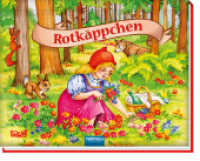- ホーム
- > 洋書
- > 英文書
- > Psychology
Full Description
When do human beings begin producing gestures, and how do they evolve throughout our cognitive and social development?
This book investigates the rich and complex ways in which gesture precedes language development and then is used in conjunction with language across the lifespan.
Some experts argue that gesture is a part of language, while others argue it is a partner to language. But all agree that gesture plays a major role in language development and practices, and therefore must be captured by scientific analyses.
This volume explores gesture's many functions--communicative, restorative, cognitive--across cultures and ages, in monolingual and multilingual populations, in students and in teachers.
Gestures, verbal productions, signs, gazes, facial expressions, and postures are all part of our socially learned, intersubjective communicative systems that we combine for the purpose of sharing meaning, referring to present and absent entities and events, expressing projects, desires, and feelings, and so much more. Collectively, the chapters demonstrate how gestures contribute to the cognitive and social development of humans within their lifespan, and may also indicate the efficacy of interactional practices and cognitive processes.
This book is thought-provoking reading for psycholinguists, cognitive scientists, and all who study language development.
Contents
Contributors
Chapter . Introduction to Gesture in Language Aliyah Morgenstern and Susan Goldin-Meadow
Part I: An Emblematic Gesture: Pointing
Chapter 2. Pointing in Gesture and Sign Kensy Cooperrider and Kate Mesh
Chapter 3. Early Pointing Gestures Aliyah Morgenstern
Part II: Gesture Before Speech
Chapter 4. Early Gesture Predicts Later Language Development Meredith L. Rowe, Ran Wei, and Virginia C. Salo
Chapter 5. Interaction Between Modalities and Within Development Olga Capirci, Maria Cristina Caselli, and Virginia Volterra
Part III: Gesture With Speech During Language Learning
Chapter 6. Constructing a System of Communication with Gestures and Words Eve V. Clark and Barbara F. Kelly
Chapter 7. Embodying Language Complexity: Co-Speech Gestures Between Age 3 and 4 Pauline Beaupoil-Hourdel
Chapter 8. Gesture Can Facilitate Children's Learning and Generalization of Verbs Casey Hall, Elizabeth Wakefield, and Susan Goldin-Meadow
Part IV: Gesture After Speech is Mastered
Chapter 9. On the Codevelopment of Gesture and Monologic Discourse in Children Jean-Marc Colletta
Chapter 10. Understanding How Gestures are Produced and Perceived Susan Wagner Cook
Chapter 11. Gesture in the Aging Brain Tilbe GÖksun, Demet Özer, and Seda Akbiyik
Part V: Gesture With More Than One Language
Chapter 12. Gesture in Bilingual Language Acquisition Elena Nicoladis and Lisa Smithson
Chapter 13. Bimodal Convergence: How Languages Interact in Multicompetent Language Users' Speech and Gestures Marianne Gullberg
Chapter 14. Gesture Helps Second and Foreign Language Learning and Teaching Gale Stam and Marion Tellier
Afterword: Gesture as Part of Language or Partner to Language Across the Lifespan
Aliyah Morgenstern and Susan Goldin-Meadow
Index
About the Editors








